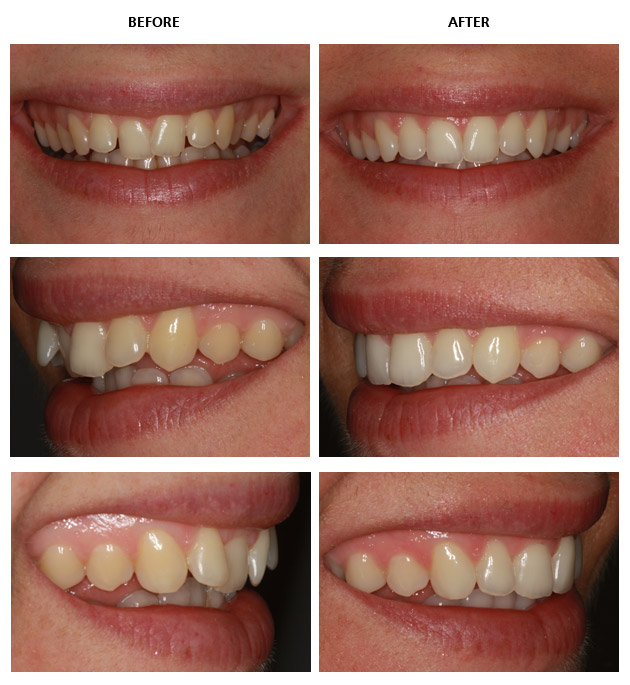Tooth sensitivity is one of the most common dental problems, with the majority of the population having suffered from sensitive teeth at some time or another. It’s a condition in which there is discomfort in the tooth or teeth caused by the consumption of hot, cold or sweet foods and drinks. The sensitivity can range from twinges in the tooth or teeth, to sharp shooting pain that can last for hours.
This condition occurs when the receding tissue of the gums exposes the dentin (the underlying layer of the teeth). The dentine tubules allow hot, cold or sweet stimuli to touch the nerves in your tooth. This causes discomfort and pain. If you are experiencing pain BOOK AN EXAMINATION NOW!
Causes of sensitive teeth
There are several causes that can lead to sensitivity in the teeth:
Incorrect brushing – Excessive brushing, brushing too vigorously or with a hard-bristled toothbrush can, over time, wear away the enamel layer of the tooth and expose the dentin. Over-brushing can also cause the gum tissue to recede.
Gum disease – Conditions like gingivitis cause the gum tissue to become inflamed and sore. This can also tear away the supporting ligaments, exposing the root surface, and allowing stimuli to reach the nerve of the tooth.
Cracked teeth – Teeth that are chipped can soon become filled with plaque. The bacteria can enter and inflame the pulp.
Bruxism – People who clench or grind their teeth can find their tooth enamel wearing down quickly, exposing the dentin.
Teeth-whitening products – Products that are used to whiten the teeth have been found to be linked to tooth sensitivity. Sensitivity is very common during both in-surgery teeth-whitening treatments and home teeth whitening. Different people experience this sensitivity to varying extents.
Age – Persons between the age of 25 and 30 have been found to be the most vulnerable to tooth sensitivity.
Diet – Foods with a high acid content – like tomatoes, lemons, oranges and other citrus fruits – and tea can erode the enamel layer of the teeth, causing sensitivity.
Dental procedures – Sometimes, tooth sensitivity may be seen following dental procedures like tooth restoration, root planing and crown placement. This kind of sensitivity is not long lasting and disappears after a few weeks. Teeth whitening frequently causes temporary tooth sensitivity.
Risk factors – Although tooth sensitivity can be seen in people of all ages, it is more often found in people who are between 20 and 40 years of age. Women have been found to be more susceptible to sensitivity.





